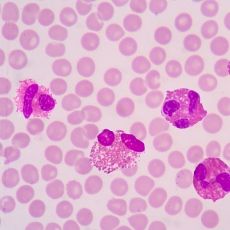Introduction
Eosinophilia is a condition characterized by a higher than normal level of eosinophils in the blood. Eosinophils are a type of white blood cell that plays a crucial role in the body's immune response, particularly in fighting parasitic infections and allergic reactions. While a certain level of eosinophils is normal, an elevated count can indicate an underlying health issue.

This comprehensive guide delves into the intricacies of eosinophilia, exploring its definition, symptoms, causes, and available treatment options. Understanding this condition is vital for early detection, effective management, and improved overall well-being.
What is Eosinophilia?
Eosinophilia is defined as having an eosinophil count greater than 500 cells per microliter (µL) of blood. This condition is often categorized into mild, moderate, and severe based on the eosinophil count:
- Mild: 500-1500 cells/µL
- Moderate: 1500-5000 cells/µL
- Severe: Greater than 5000 cells/µL
Eosinophils are produced in the bone marrow and are typically present in small numbers in the blood and tissues. Their primary function is to defend the body against parasitic infections and regulate allergic responses. However, when their numbers surge beyond the normal range, it signals an underlying problem.
Symptoms of Eosinophilia
The symptoms of eosinophilia vary greatly depending on the underlying cause and the organs affected. Some individuals may remain asymptomatic, while others may experience a range of symptoms, including:
- Skin rashes: Itching, redness, and swelling.
- Respiratory issues: Wheezing, coughing, and shortness of breath.
- Gastrointestinal problems: Abdominal pain, diarrhea, and nausea.
- Muscle and joint pain: Fatigue and weakness.
- Fever: In some cases.
Causes of Eosinophilia
Eosinophilia can be caused by a wide range of factors, including:
- Parasitic infections: The most common cause of eosinophilia worldwide.
- Allergic reactions: Asthma, hay fever, and drug allergies.
- Autoimmune disorders: Rheumatoid arthritis and lupus.
- Certain cancers: Leukemia and lymphoma.
- Skin conditions: Eczema and dermatitis.
- Medications: Certain antibiotics and anti-seizure drugs.
Treatment for Eosinophilia
The treatment for eosinophilia primarily focuses on addressing the underlying cause. Once the root cause is identified and managed, the eosinophil count typically returns to normal. Treatment options may include:
- Antiparasitic medications: If the cause is a parasitic infection.
- Corticosteroids: To reduce inflammation in allergic reactions and autoimmune disorders.
- Leukotriene inhibitors and monoclonal antibodies: For managing asthma.
- Disease-specific treatments: For underlying conditions like cancer or autoimmune disorders.
Conclusion
Eosinophilia, while often asymptomatic, can indicate an underlying health condition requiring prompt attention. Understanding the causes, symptoms, and treatment options associated with eosinophilia is crucial for effective management. If you suspect you may have eosinophilia or are experiencing any related symptoms, it is essential to consult a healthcare professional for proper diagnosis and treatment.





